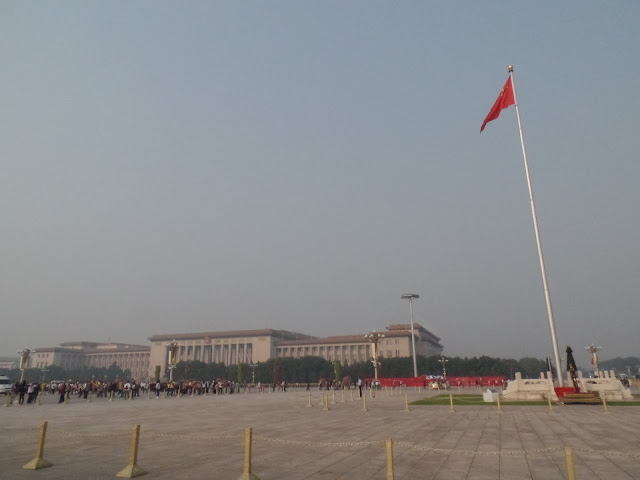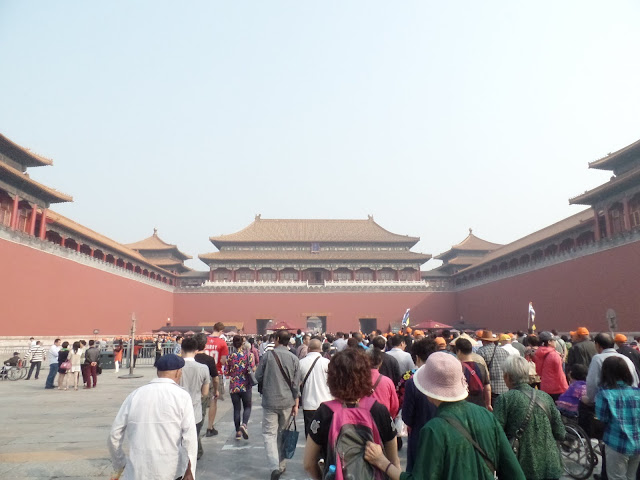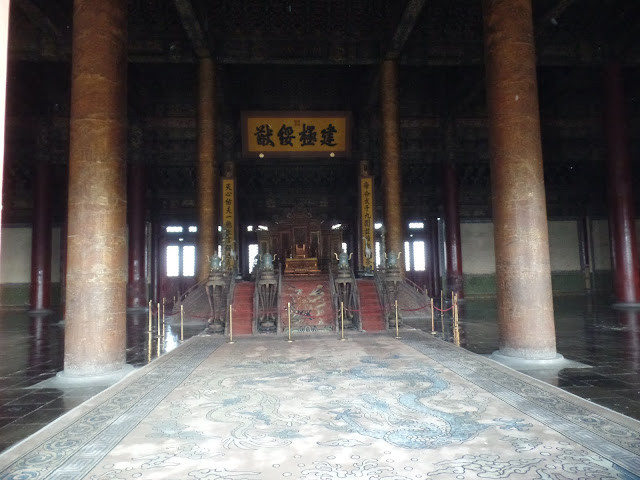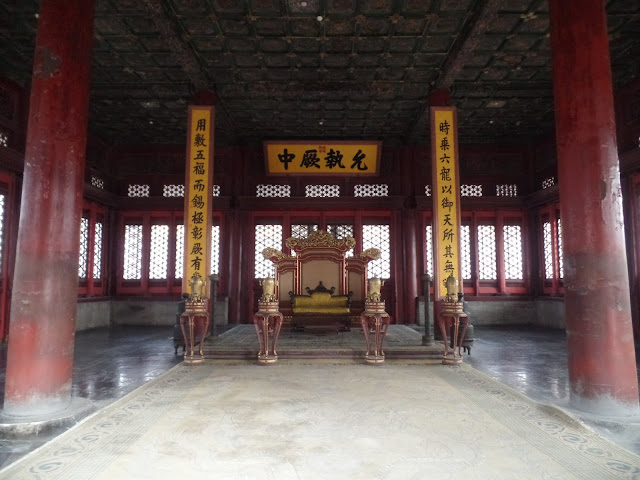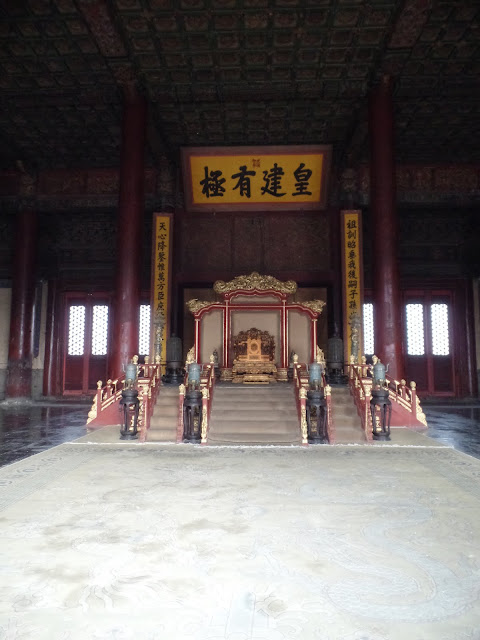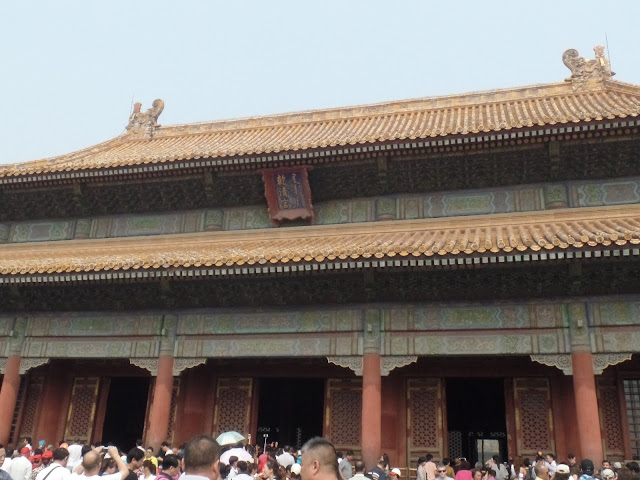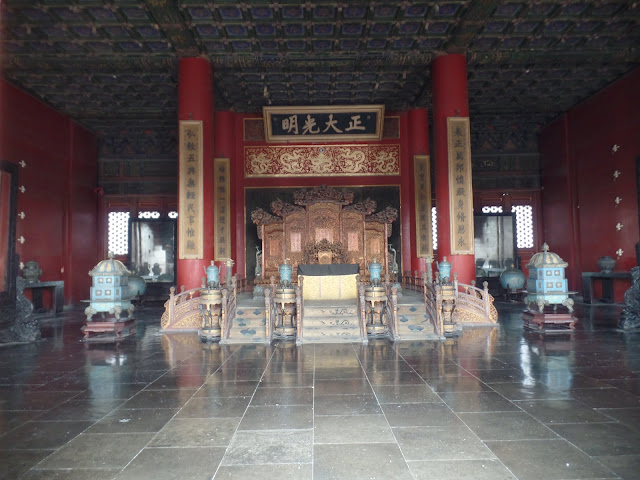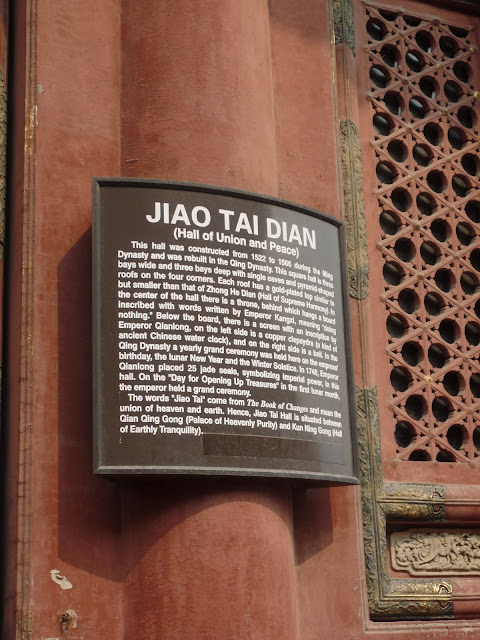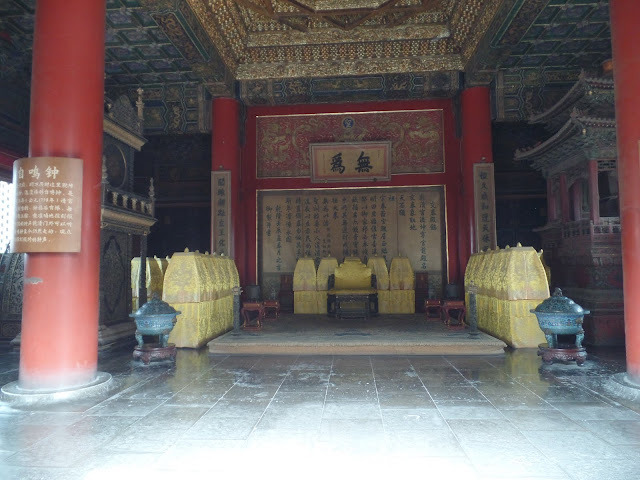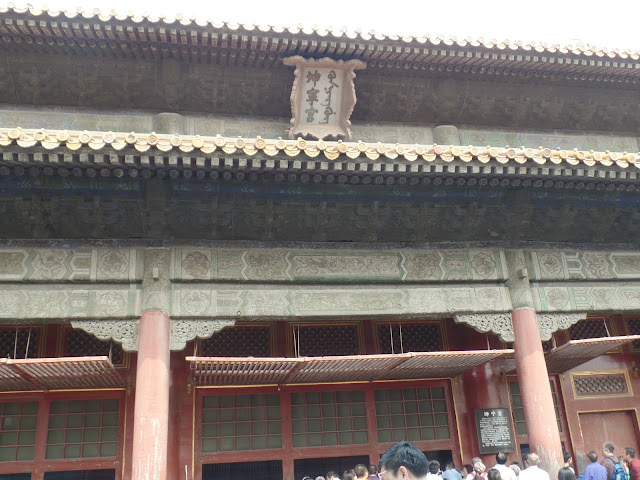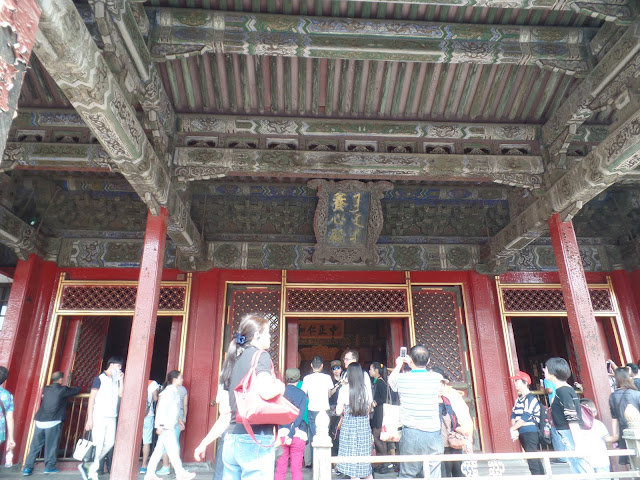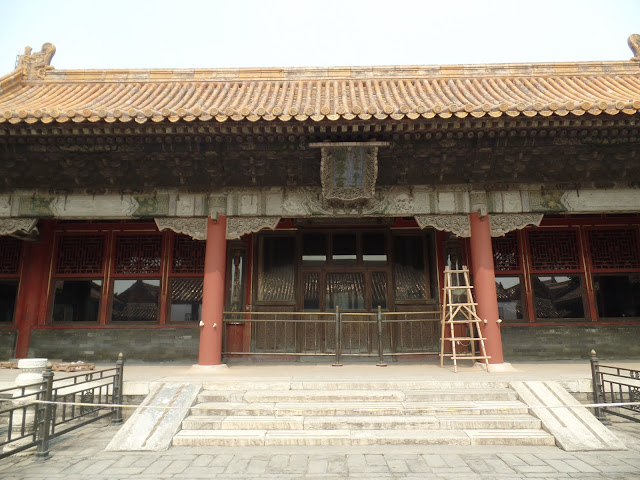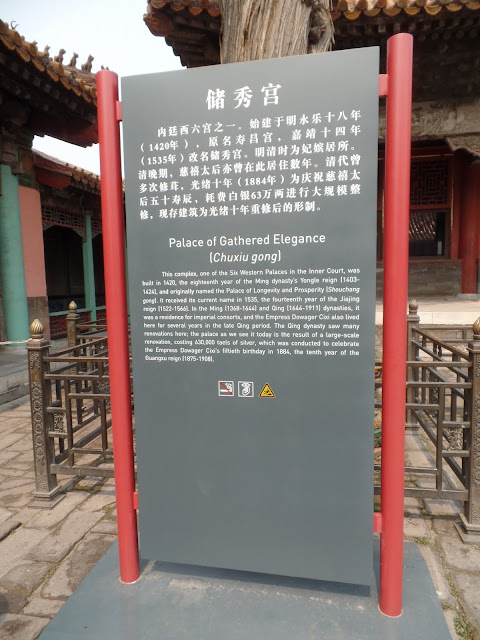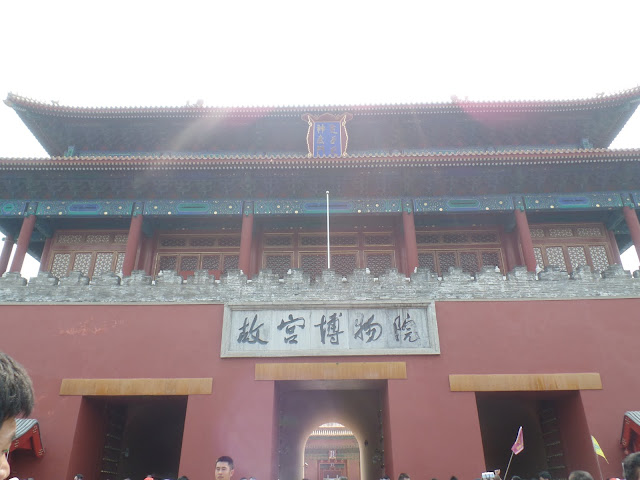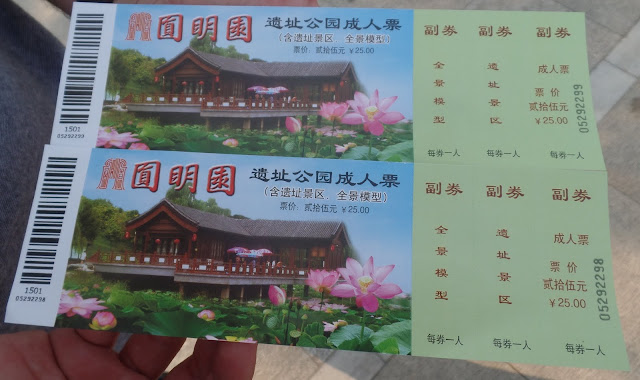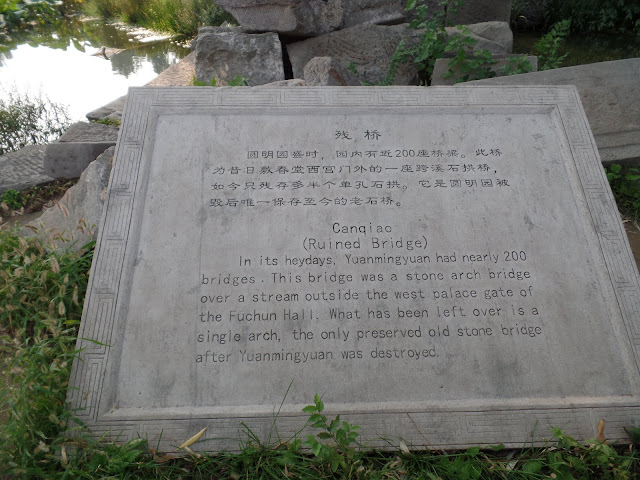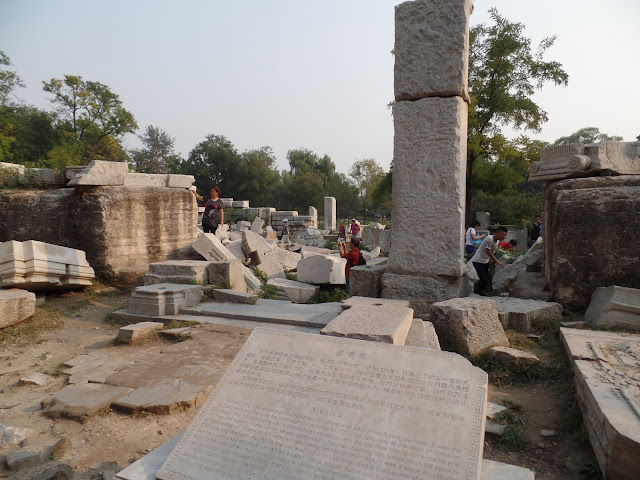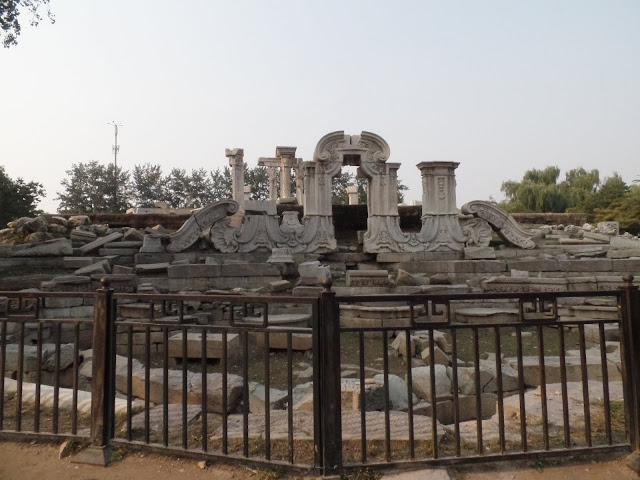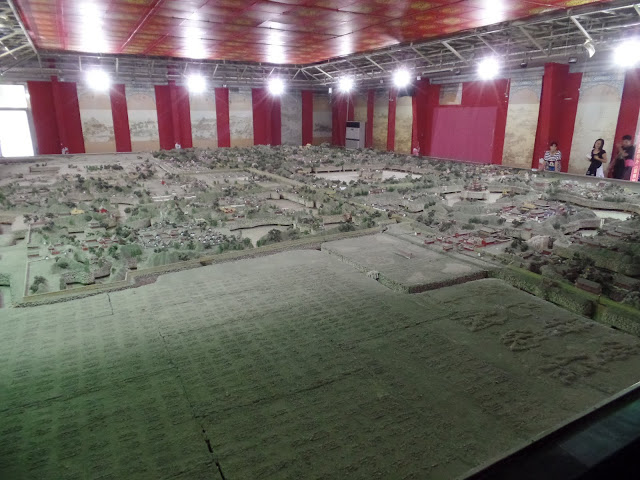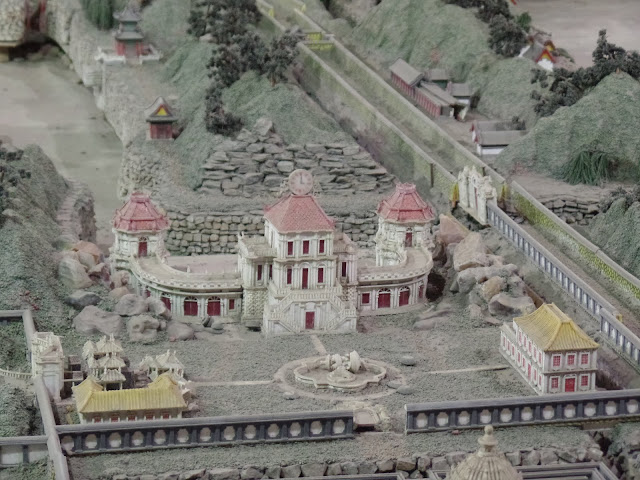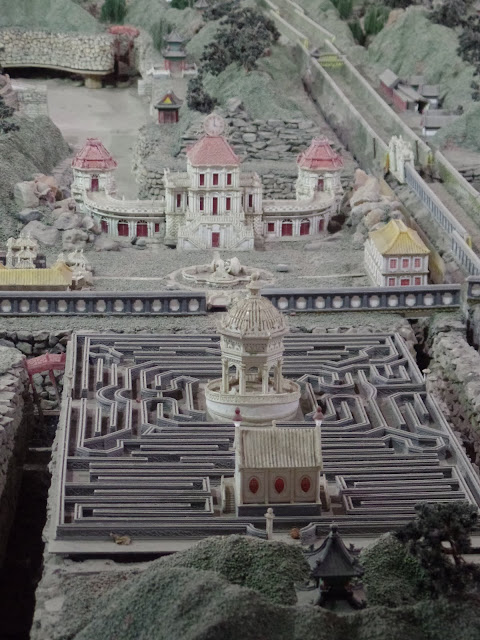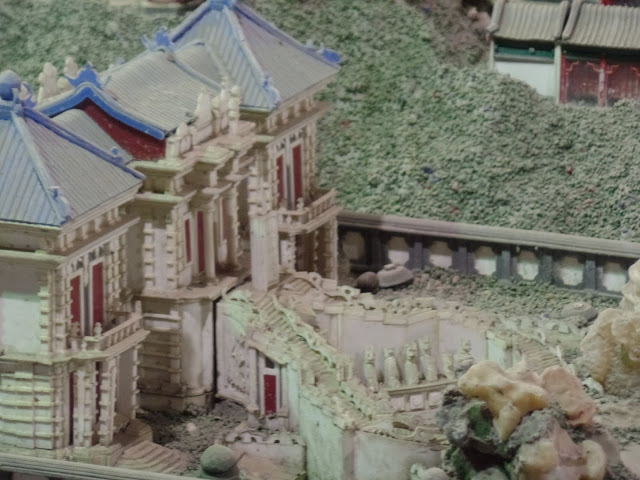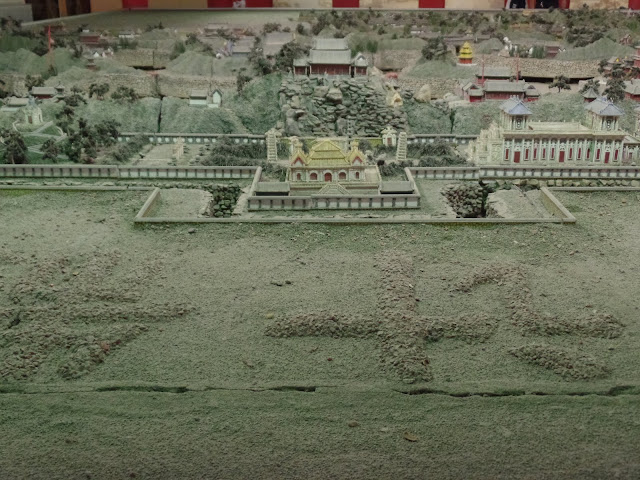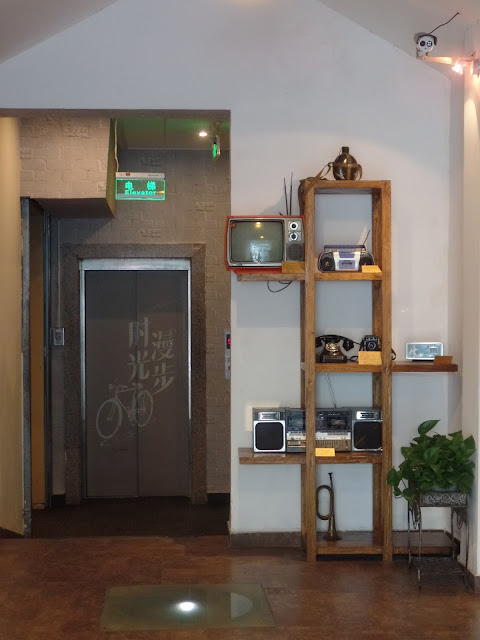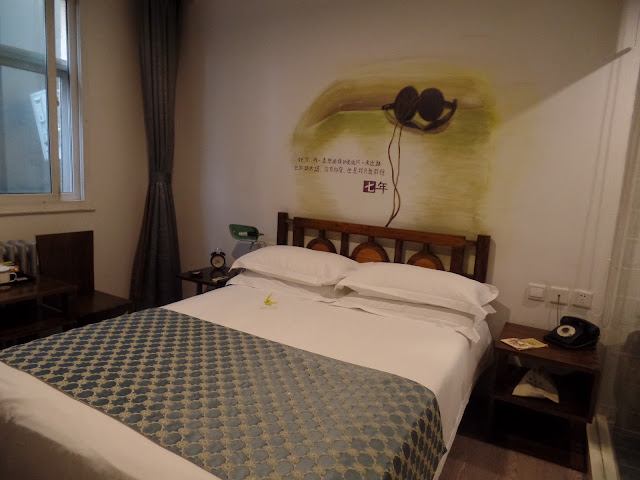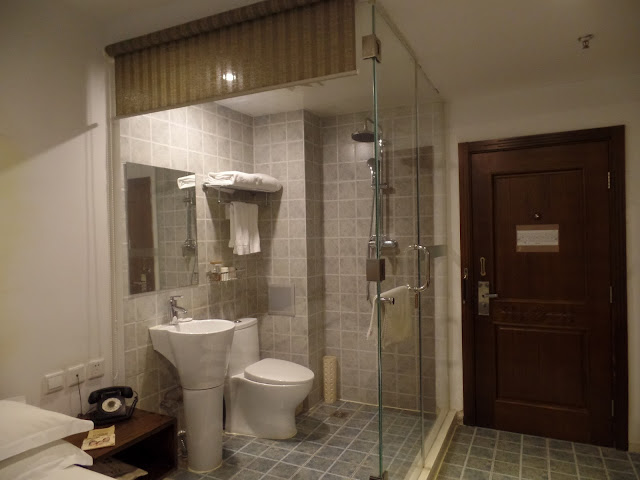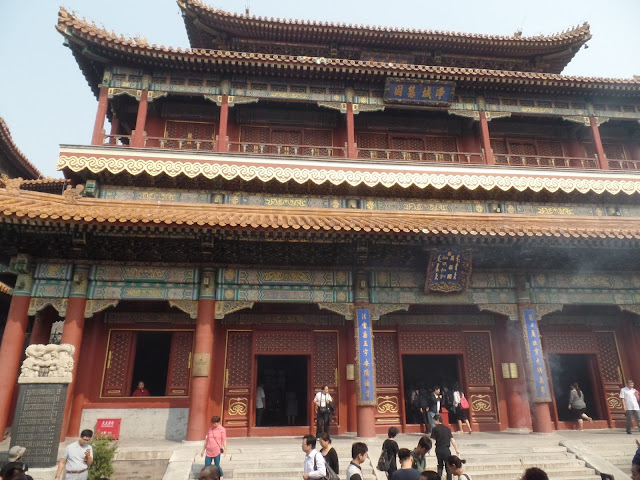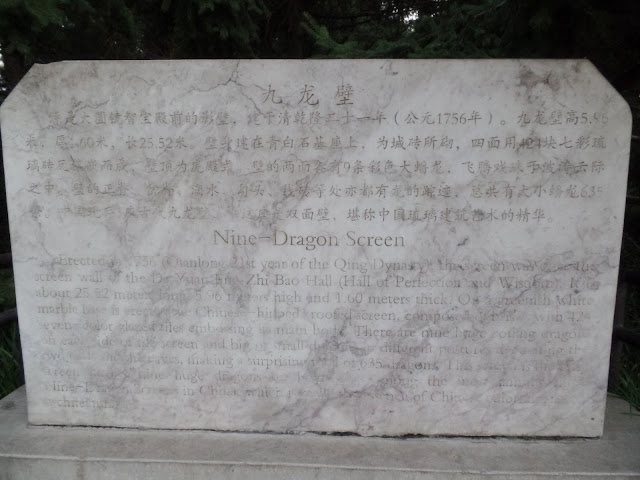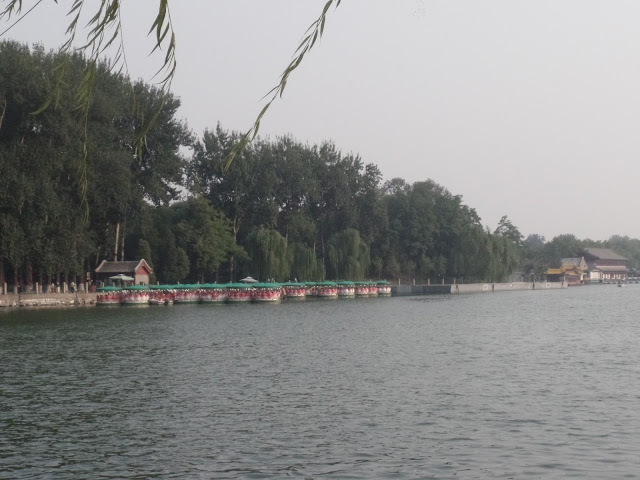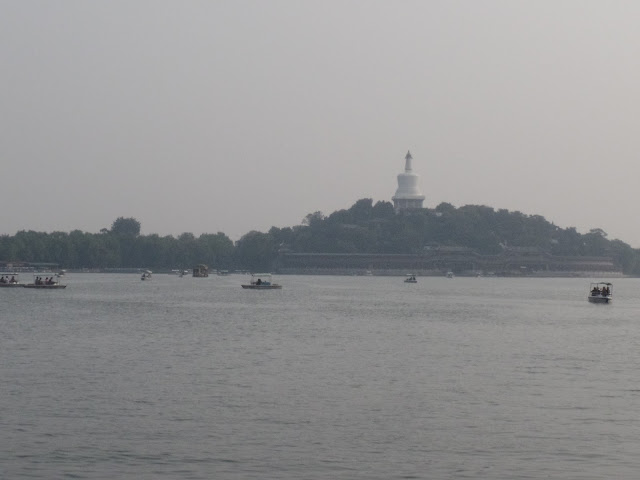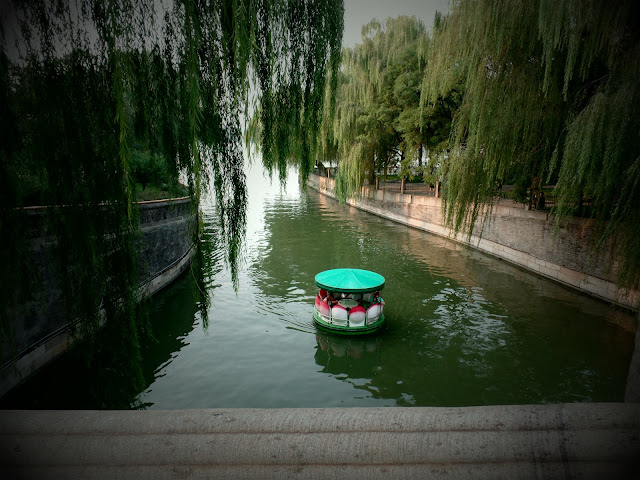Day 1
We took an overnight flight from Singapore to Beijing directly and reached Beijing Capital International Airport Terminal 3 at 7.15am. The queue at the immigration clearance was quite long and took us some time to get through. After that, we took an internal train to the main complex, where we collected our luggage. From there, we exited the area and easily found the directional sign leading us to the Airport Express Railway to the city. We wanted to buy the Yikatong (一卡通) at the station here, but the authorities said they have run out of the cards, so we had to buy the single trip ticket instead. Yikatong (一卡通) is Beijing's stored-value smart card (similar to London's Oyster Card and Hong Kong's Octopus Card), which can be used on MRT, taxi, buses, intra city trains, and even in supermarkets and other shops. If you travelling throughout Beijing using their public transportation, then you are recommended to buy one, which you can refund the remaining amount before you leave Beijing.
The Airport Express Railway terminates at Dongzhimen Station (东直门), which is also an interchange station for the MRT Line 2. We bought our Yikatong (一卡通) here and continued the journey to our hotel by the MRT. The security at Beijing's MRT stations was tight. Every passenger was required to have their handbags or luggage scanned (just like in the airport) before entering the platform level. If the authorities found that we have drinking bottles inside, they will ask us to take it out to visually inspect, and they may also ask us to have a sip of the content inside to prove that it's non-toxic! The MRT Line 1 and 2 are the oldest lines in Beijing, thus it is common to find that there's no escalator between the ticketing level and the train platform level! We had to hand carry our heavy luggage and slowly walked up and down the staircase. In general, the stations and trains are clean, and they have English translation for all directional sign boards, thus it shouldn't be a problem for tourist who don't know Mandarin to travel using the MRT.
Nostalgia Hotel Beijing Yonghe Lama Temple (时光漫步怀旧主题酒店-北京雍和宫店)
Yonghe Lama Temple (雍和宮)
We had a short rest in the room and then we set off to our first attraction, Yonghe Lama Temple (雍和宮), which is near to our hotel. We walked for around 15 minutes and reached the ticket office at the south end of the temple. There was no queue, so we quickly bought our tickets and entered the temple. The ticket also comprised of a small CD, which provides an overview of the temple.
Shizhahai (什刹海)
We left the temple via the same entrance we came in, walked to Yonghe Lama Temple Station (雍和宮) and took the MRT to Shizhahai Station (什刹海). From the station, it was just a short walk before we reached the bank of Qianhai (前海).
 |
| View of Shizhahai - Qianhai |
Shizhahai (什刹海) area has three lakes, namely Qianhai (前海), Houhai (后海) and Xihai (西海). Along the banks of Qianhai (前海) and Houhai (后海), there are many pubs and restaurants, which make Shizhahai (什刹海) popular for its night life among the locals. Other than this, it is also a historical scenic place, where the former residence of many famous people are located here, such as the Prince Gong (恭亲王) and Soong Ching Ling (宋庆龄). This area is also popular for the trishaw rides within the hutong (胡同), where you get to see the life of locals and the traditional Siheyuan (四合院) courtyard houses. Qianhai (前海) and Houhai (后海) are separated by a bridge called Yinding Bridge (银锭桥). This is a major crossing between the east and west bank, thus there are many people and vehicles here. We ate Zhajiangmian (炸酱面) for our lunch at one of the restaurant near the bridge.
 |
| Intro of Yinding Bridge |
 |
| Zhajiangmian |
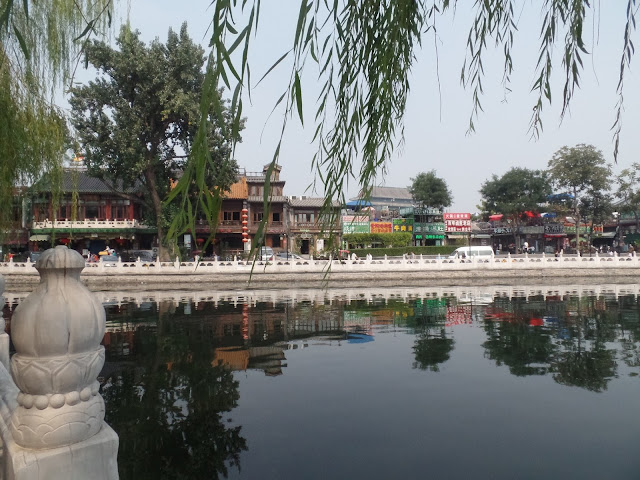 |
| Row of restaurants along the bank of Qianhai |
Prince Gong Mansion (恭王府)
After lunch, we walked our way along the west bank of Qianhai (前海) to the next attraction, Prince Gong Mansion (恭王府). This is the former residence of Prince Gong (恭亲王) of Late Qing Dynasty, also one of the best preserved imperial mansion in Beijing. The whole area is big, divided into the garden in the north and the residential area in the southern part. We bought the entrance tickets at the southern end of the mansion.
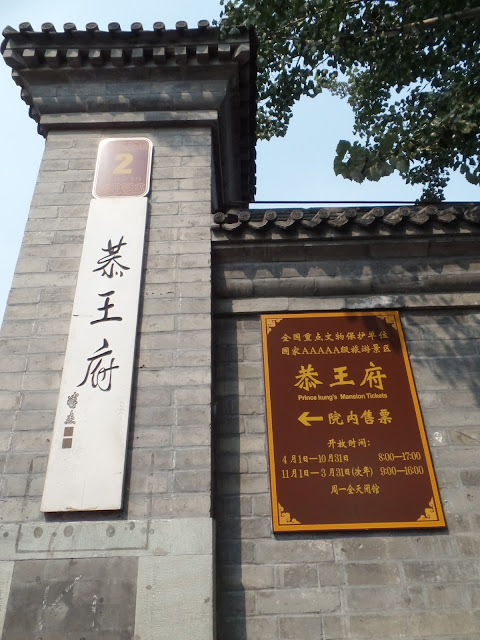 |
| Prince Gong Mansion |
 |
| Prince Gong Mansion Entrance Ticket |
The residential area consists of several Siheyuan (四合院) courtyards, with many halls now converted to showcase the history of the mansion's first owner, Qing official Heshen (和珅), Prince Gong (恭亲王) and other Qing Princes. It also contains exhibitions showcasing many collections (from household items to currency and hand weapons) from the imperial families. Note: I find that most of the exhibitions there have little or no English translations, thus it is not that friendly to non-Mandarin speaking tourists.
 |
| Western gun and lock exhibit |
 |
| Qing official robe of the Prince |
 |
| Western Clock exhibit |
We proceeded to the garden section next. There are artificial mountain peaks, caves, ponds, rivers and pavilions that decorated around the entire garden. There are three main highlights in the garden, which are the Western Style Gate, the Grand Opera House and the "Fu" Stele. After the tour in the garden, we made our way back to the southern entrance to exit the mansion.
Gui Jie (簋街)
We took the MRT from Beihai North Station (北海北) near the North Gate and back to Beixingqiao Station (北新桥). Stepping out of the station at night, we noticed the entire area was very different. This is the end of the famous food street, Gui Jie (簋街), or more famously known as the "Ghost Street". The Mandarin pronunciation of "簋" sounds like the word "Ghost 鬼", thus giving its name. Gui Jie (簋街) stretches along the entire Dongzhimen Inner Street (东直门内大街) and most of the restaurants sell the same popular dish, the Spicy Baby Lobster (麻辣小龙虾).
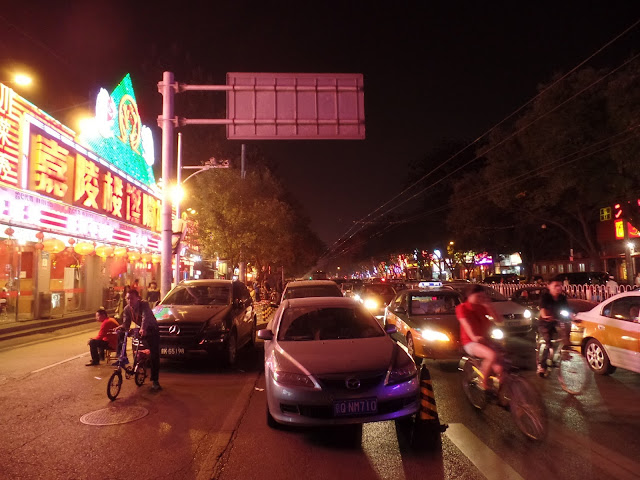 |
| Gui Jie |
We made a random choice and walked into one of the restaurant to have our dinner. Since the Spicy Baby Lobster is so famous here, I definitely have to order this dish. The lobster comes in different sizes and the minimum order is 10 lobsters per serving. Unfortunately my wife don't take seafood, thus I could only choose the smallest lobster size serving. Later, I was told by the staff that that they would give us 5 more lobster free of charge as part of their promotion (you can imagine the fierce competition here). On top of this, we just ordered another stir fried pork. The lobster was served in a pot of "Sze Chuan Ma La" broth. The restaurant provided plastic gloves, so that I could use it to shell the lobsters.
 |
| Spicy Baby Lobster |
 |
| Stir Fried Pork |
Although there's a total of 15 lobsters, but they don't have a lot of meat, thus I was still able to finish them. Overall I had enjoyed the meal and the meal wasn't pricey as well. After the meal, we made our way back to the hotel to call it a day.
Follow the links below to the other days of my China tour:
Day 1: Beijing (Yonghe Lama Temple, Shizhahai, Prince Gong Mansion, Behai Park, Gui Jie)
Day 2: Beijing (Tiananmen Square, Forbidden City, Old Summer Palace, Wangfujing)
Day 3: Tianjin (Italian Style Town, Nanshi Food Street, Drum Tower, Ancient Cultural Street, Quanjude Peking Roast Duck)
Day 4: Xi'an (Muslim Street, Drum Tower, Bell Tower, Xi'an City Wall, Defu Alley)
Day 5: Xi'an (Terracotta Army Museum, Da Ci'en Temple, Big Wild Goose Pagoda, Tang Paradise)
Day 6: Huashan
Day 7: Beijing (Temple of Heaven, Silk Street)
Day 8: Beijing (Great Wall - Badaling, Ming 13 Tombs - Ding Ling, Shizhahai)
Day 9: Beijing (Summer Palace)

